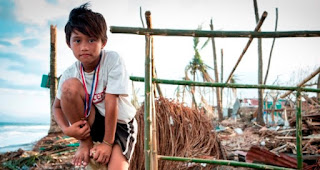Role of Technology in Children-centered Disaster Risk Reduction Management
This week, I attended a meeting with a group of NGOs involved in child rights advocacy in Cebu to talk about children and their role in disaster risk reduction management (DRRM).
In 2005 UNICEF committed to the Hyogo Framework for Action with five priority areas. UNICEF’s DRR goals include: (1) DRR for children and women is a national and local priority, (2) different risks faced by girls, boys and women are identified and addressed, (3) safer and more resilient conditions for girls, boys and women, and (4) strengthened humanitarian preparedness, response and recovery through capacity development. UNICEF stresses that children have an inalienable right to participate in decisions that ultimately affect them.
The scholars and child rights advocates of The Share A Child Movement Inc go room to room campaigning for children to know and protect their rights. Imagine what they can accomplish advocating for disaster preparedness, risk reduction and mitigating climate change.
A2D’s work on inclusive DRR with UNICEF brought them to Haiyan affected areas in North Cebu where they capacitated the children with trainings, seminars and workshops. The very first DRR youth camp in northern Cebu was conducted last May 2015. The community also participated during the Earth Hour for the very first time.
Save the Children is lobbying to support the passage of the ‘Children’s Emergency Relief & Protection Act’ House Bill 5285 and Senate Bills 2446, 2448, 2466, 2487, 2502 & 2718, which aims to increase protection for the child during emergencies when the child is most vulnerable.
Even the Cebu Provincial government seeks to support child-centered DRRM with capacity-building activities empowering children.
Many NGOs recognize the children as valuable advocates for rights. They can be valuable advocates in caring for the environment and for the protection of vulnerable populations such as pregnant women and children, the disabled and handicapped, and the elderly as well. They have the capacity to identify hazards and risks in their schools, homes and communities. During times of disaster and calamities, they can be easily mobilized as leaders to ensure early evacuation as needed and proper coordination with authorities for rescue.
Children are more and more into technology and social media. How can we direct this positive energy to get the vulnerable population involved in protecting themselves and others during natural disasters and calamities so that the death toll during events like Yolanda would be brought to a minimum.
As the former Senator Nino Aquino once said “the Filipino is worth dying for…” let us hope that during times of natural disasters and calamities, we are prepared enough to be able to say “the Filipino is worth living for…”

